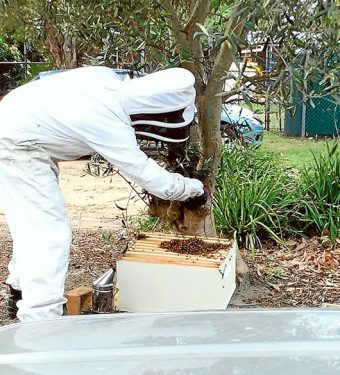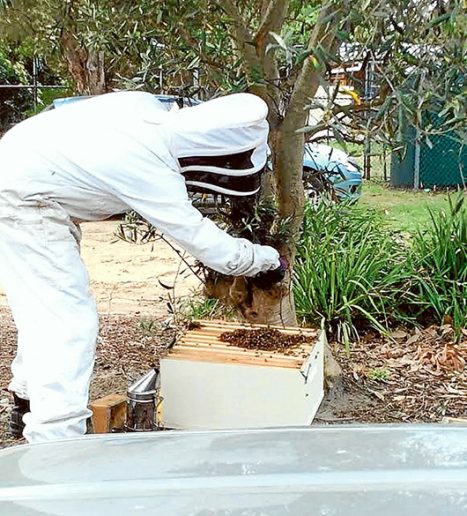
ROSEBUD myotherapist and Pilates teacher Claire Stidston could be forgiven for not knowing what to do when she discovered a swarm of bees had attached itself to her car.
Unsure who to call or how to remove the swarm without harming herself – or her little hitchhikers – Ms Stidston drove home to Main Ridge with 50 bees in hot pursuit.
“I felt terrible but I couldn’t think what to do about them,” she said.
“Long story short, overnight, they were run over and the whole hive got killed.
“Bees are so important to us and I don’t think enough people know what to do if faced with a whole swarm.”
Beekeeper Simon Mulvany, founder of Save the Bees Australia, said swarms on the Mornington Peninsula were natural and “nothing to be concerned about”.
He said they occurred when a colony split, with 60 per cent of the hive staying with one queen while 40 per cent ventured off looking for new territory with the new queen.
“The bees on Claire’s car would have been resting while the scouts were out patrolling for a new hive site,” he said. “This is a natural part of the bees’ life cycle and may take three days.”
He received Ms Stidston’s call next day, but it was too late to help. “She felt dreadful,” he said.
Last week Mr Mulvany removed a “huge” swarm at Beleura Hill Preschool, Amelia Av, Mornington, to the great interest of the staff and pupils. He said the swarm had been set for extermination by the shire but was safely relocated to a friend’s rural property – one of 100 relocations Mr Mulvany did in the past year.
“Residents should contact a beekeeper immediately they see a ball,” he said.
His website savethebeesaustralia says that once the bee scouts find a suitable home in urban areas it is quite likely people will be affected, so quick action is needed.
“Once inside the wall of a house the removal can be costly and take a lot of time or, in the worst case, bees will be exterminated.”
The site swarmpatrol.com is handy for notifying the closest beekeepers, who will arrange a visit to remove the hive for relocation.
The shire’s natural systems team leader Simon Thorning said bees (and wasps) in bushland reserves were only removed or relocated if they were a problem for workers doing bushland maintenance or management works, or for the safety of the public – usually only where people congregate.
“Generally, destruction [of the hive] will only occur where it is physically impossible to access the hive for removal or relocation,” he said.
Mr Mulvany said wisdom and long-term vision for the future of beekeeping were necessary at a time when the dreaded varroa mite was threatening. “Australia is the only continent with healthy bees not affected by the mite, which is the only parasite which kills its host,” he said, with experts confirming it is not a question of “if” but “when” the mite will arrive.
“If even one hive gets attacked the mites will spread quickly,” Mr Mulvany said. “That would put an end to commercial beekeeping for the next two years.”
Despite routine commercial beekeeping practices of moving hives all over the state for short periods – hives in their normal state would remain in the one place for years. This man-made intervention could also exacerbate the devastating effects of the varroa mite.
“It’s not natural for hives to be moved around. Some remain in exposed conditions for years,” he said.
He quoted Albert Einstein to illustrate the bees’ importance: “If the bee disappeared off the surface of the globe, then man would have only four years of life left. No more bees, no more pollination, no more plants, no more animals, no more man.”
First published in the Southern Peninsula News – 13 October 2015




